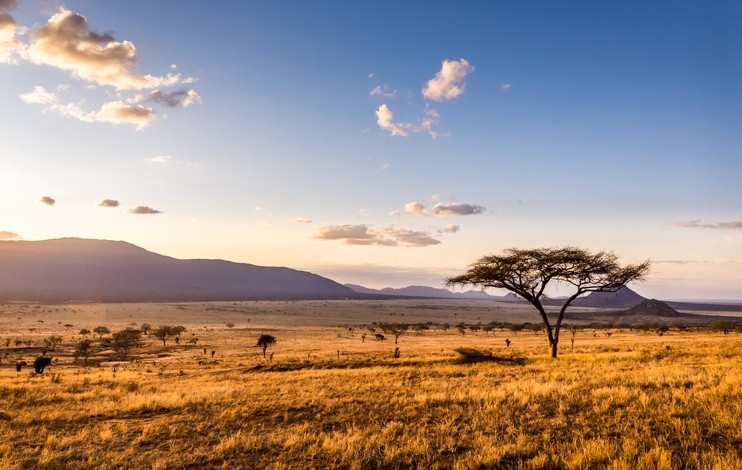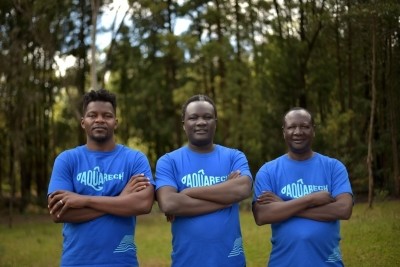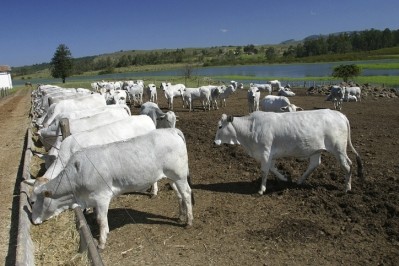Kenya and Ethiopia bolster drought defenses with feed security systems

A long-term project led by the United Nations’ Food and Agriculture Organization (FAO) and the Intergovernmental Authority on Development (IGAD) is working towards the implementation of feed security systems across East Africa. While still in its infancy, this approach will help development and humanitarian partners, governments, private sector, agencies and livestock farmers to better plan feed requirements and organize resources, says the FAO.
“All countries in the subregion of East Africa suffer from drought and the response usually involves the mobilization of feed and water for safeguarding livestock assets. The Ethiopian and Kenyan governments were already calling for a longer-term animal feed solution, so when the FAO facilitated the process, these two countries were forthcoming,” Paul Opio, livestock officer at the FAO, told FeedNavigator.
The first step in establishing a national feed security system was to ascertain the feed supply and demand situation in these countries, because, as Opio points out, it is impossible to manage a resource if its availability in quantitative terms is not known.
Building a picture of feed availability
This was done by mapping out all the available feed resources in a ‘feed inventory’, establishing the ‘livestock feed requirement’ in that country, and using that data to calculate the ‘feed balance’ on a dry matter, metabolizable energy and crude protein basis.
The feed inventory records feedstock from a range of sources including crops, grazing biomass, concentrate feed materials such as oilseed cakes and industrial by-products such as brewers’ grains, tomato pulp, pineapple pulp and molasses, which are currently under-exploited.
“In Europe, industry by-products are very efficiently utilized by the feed industry, whereas in developing countries a large amount is wasted because of poor links between the agro-processing and feed industries. The feed inventory is the starting point for addressing that,” said Opio.
Ethiopia was the first country to pilot this methodology in East Africa and has now developed feed balances for all ten of its regions.
“Ethiopia knows that they have surplus feed resources in two regions and a deficit in eight regions. This knowledge can be used to better manage their resources and move feedstock to regions that are hit by droughts,” explained Opio.
Case study: Kenya
Feed balances are now available for the 23 arid and semi-arid land counties of Kenya and are in the final stages of development for the remaining 24 regions (due for completion by the end of the year).
In Kenya, the mapping of grazing biomass has been visualized by a predictive livestock early warning system, a decision support tool that can provide near real-time assessment of edible vegetation and make projections for up to six months into the future. This tool is used in conjunction with other data sources to trigger government-led drought response, aimed at protecting livestock assets.
“In 2017, data from that system among others was used to declare drought in Kenya. Being given early warning meant that the Government, agencies and farmers could prepare for it,” noted Opio.
In Kenya, forage conditional maps are also produced every month, and these feed into the early warning system. The data for these maps are collated by country feed inventory data collectors who are trained to validate forage conditions in their respective areas using an application. Collection of plant and soil analysis data is then used in simulation models to generate rangeland forage biomass estimates.
The FAO concedes that the project, which started in 2018, has enjoyed the greatest success in Ethiopia and Kenya because they have dedicated government agencies for managing emergencies.
Challenges in Somalia and South Sudan
In countries with security challenges and institutional weaknesses, such as Somalia and South Sudan, implementation is more challenging, says Opio.
“Emerging from internal conflict for nearly two decades, Somalia has major capacity and resource gaps which impede the delivery of basic services. Access to some parts of the country is also difficult due to insecurity, making it hard to gather data from the field,” he explained.
Despite these massive challenges, the FAO and IGAD are working with Somalia and Sudan, as well as Uganda, to establish their feed inventories and feed requirements.
And whilst the infrastructural obstacles are many, there is no resistance to the approach. Quite the contrary in fact, according to Opio: “This approach has been taken up proactively by countries in East Africa. They have seen the results in Ethiopia and Kenya and want to do the same.”
Establishing feed resource requirements and availability along with early warning and action mechanisms in Djibouti, Eritrea, Ethiopia, Kenya, Somalia, South Sudan, Sudan and Uganda are the first objectives in the Regional Feed Action Plan developed by the FAO and IGAD. Once countries have these systems in place, the next step will be to develop sustainable animal feed supply chains.
A full report on the FAO and IGAD’s work on establishing national feed security systems in East Africa can be seen here.












